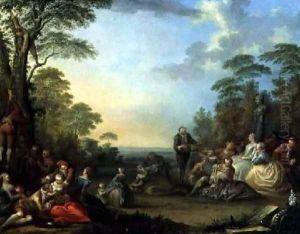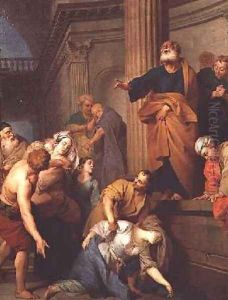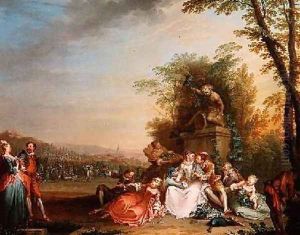Sebastien II Le Clerc Paintings
Sébastien II Le Clerc, also known as Sébastien Leclerc the Younger, was a French engraver, draftsman, and painter. Born in 1676 in Paris, France, he descended from a distinguished family of artists and engravers. His grandfather, Sébastien Le Clerc the Elder, was a celebrated engraver and illustrator, and his father, Sébastien Le Clerc I, was a skilled draughtsman and painter. This artistic lineage provided the younger Sébastien with a rich environment for developing his artistic talents from an early age.
Sébastien II Le Clerc was admitted to the Académie Royale de Peinture et de Sculpture in 1704, where he distinguished himself with his engraving and illustration skills. He had a prolific career, producing a vast number of plates that ranged from religious and mythological scenes to more contemporary subjects and events of his time. Le Clerc was particularly renowned for his ability to translate paintings and drawings into engravings with great precision and finesse.
In addition to his engravings, Le Clerc also created a number of drawings and paintings. However, his reputation today primarily rests on his skill as an engraver. He was part of the movement in French art that straddled the end of the Louis XIV style and the beginning of the Regency period. His works are characterized by clear lines, meticulous attention to detail, and a certain gracefulness that was typical of the French classical style.
Sébastien II Le Clerc was not only a productive artist but also a teacher; he passed on his skills to his pupils, thus continuing the family tradition. He worked well into his old age, remaining active in the Parisian art scene until his death in 1763. Throughout his long career, Le Clerc contributed significantly to the art of engraving and to the visual culture of his era. His engravings remain valuable records of the artistic and historical scenes of his time, cherished by collectors and art historians alike.


